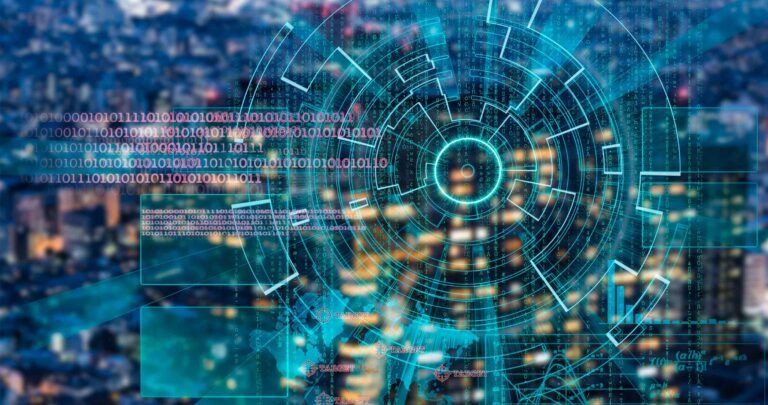10 Ways Businesses Can Use the Internet of Things to Improve Operations

- How Does the Internet of Things Enhance Connectivity in Various Industries?
- What are the Potential Challenges Regarding Connectivity Faced by the IoT?
- How Will the Internet of Things Impact Daily Lives in Terms of Connectivity?
- What Security and Privacy Concerns Emerge From the Increased Connectivity Facilitated by IoT?
- How Can Businesses Harness the Power of IoT to Improve Their Connectivity and Operations?
- How Do Emeritus Courses Prepare You to Lead IoT Initiatives and Embrace the Opportunities of Connected Technologies?
The Internet of Things (IoT) has evolved from being a mere buzzword to a transformative force driving an interconnected world. The growth trajectory of the Internet of Things market is remarkable. According to recent reports, the global IoT market is expected to surge from $662.21 billion in 2023 to a staggering $3,352.97 billion by 2030, with an impressive CAGR of 26.1% during this period.
Furthermore, according to the IoT Analytics State of IoT—Spring 2023 report, there were approximately 14.3 billion active IoT endpoints in 2022, representing an 18% surge in global IoT connections. Additionally, 2023 is set to witness another 16% growth, propelling the number of connected IoT devices to an estimated 16.7 billion active endpoints. Thus, the world is growing increasingly entwined with the Internet of Things devices and systems.
This article will explore how IoT enhances connectivity, unearthing its potential challenges. Additionally, it will discuss IoT’s impact on our daily lives and how businesses are capitalizing on the power of IoT.
How Does the Internet of Things Enhance Connectivity in Various Industries?
 The Internet of Things is a network of physical objects embedded with software, sensors, and other technologies, enabling them to connect and exchange data over the Internet. These devices include everyday household objects as well as sophisticated industrial tools.
The Internet of Things is a network of physical objects embedded with software, sensors, and other technologies, enabling them to connect and exchange data over the Internet. These devices include everyday household objects as well as sophisticated industrial tools.
IoT’s ability to connect devices, collect data, and enable real-time communication has opened up many opportunities for businesses to optimize processes, improve efficiency, and deliver enhanced services. Some of its impactful use cases include:
- Remote patient monitoring in healthcare, facilitating timely interventions and data transmission to healthcare providers
- E-learning and smart classrooms, provide interactive learning and personalized education plans
- Smart cities enable connected infrastructure, such as smart streetlights and waste management systems, for improved services
- Farming, transforming farming with smart sensors and automated systems for irrigation, fertilization, and monitoring crop conditions
- Transportation and logistics, optimizing routes, vehicle health monitoring, and driver safety
- Real-time tracking, reducing delays in supply chain management, and increasing efficiency
- Smart factories, provide real-time monitoring of production lines and supply chain logistics to optimize efficiency
ALSO READ: 4 Types of Cloud Computing: Which is the Best for Your Business
What are the Potential Challenges Regarding Connectivity Faced by the IoT?
The Internet of Things relies on connectivity to enable seamless communication between devices. This interconnectedness allows IoT devices to exchange data and work together efficiently, helping a wide range of applications and services. However, this connectivity results in several challenges, which include:
1. Power Consumption
Power management is critical in developing a high-level IoT architecture, as devices require uninterrupted power. Moreover, constantly staying connected and transmitting data can drain batteries quickly, affecting device longevity and requiring frequent maintenance. Thus, minimizing power requirements and achieving low power consumption is essential. Developers can utilize Low-Power Wide Area Networks (LPWANs) and solutions such as energy harvesting, power management integrated circuits, sleep modes, and wake-up mechanisms.
2. Bandwidth
The Internet of Things networks generate vast amounts of data, and transmitting all this data over networks can lead to bandwidth constraints. This strain on the existing network, especially with thousands of devices operating simultaneously, can result in network congestion and slower response times. Therefore, to tackle this issue, businesses can implement software solutions that optimize bandwidth utilization and reduce on-site latency. Furthermore, IoT devices can be designed to prioritize critical data transmission and use data compression techniques to reduce the overall data volume.
3. Interoperability
IoT interoperability is the capability of two or more devices, systems, platforms, or networks to work together seamlessly. This is essential for IoT to reach its full potential and deliver a streamlined and user-friendly experience for all users. However, various manufacturers’ wide range of devices and communication protocols can pose a significant challenge to achieving interoperability. Thus, creating standardization and adopting open communication protocols are crucial to address this issue.
How Will the Internet of Things Impact Daily Lives in Terms of Connectivity?
The Internet of Things is revolutionizing the way we live and work. These devices have seamlessly integrated into our daily routines, making our homes smarter and tasks more efficient. Smart appliances like washers, dryers, refrigerators, coffee machines, and stoves showcase how IoT enables connectivity and remote control. These devices add convenience to human lives as they can be operated through mobile apps and voice assistants.
Additionally, the increased use of smart assistants like Amazon Alexa, Apple’s Siri, and Google Home further highlights the impact of IoT. These voice-activated devices allow us to interact with our connected homes and access information effortlessly, making daily tasks more convenient and accessible.
Furthermore, IoT wearables are crucial in monitoring our health and activity. Smartwatches, fitness trackers, sleep trackers, and other wearables continuously collect and transmit data to our smartphones and cloud services, providing valuable insights into our well-being and daily activities. As IoT continues to evolve, its impact on our daily lives is bound to expand, bringing forth innovations and possibilities.
ALSO READ: Top 7 IoT Trends That Will Shape the Digital World in 2023
What Security and Privacy Concerns Emerge From the Increased Connectivity Facilitated by IoT?
Internet of Things devices and networks are often vulnerable to security breaches due to their network topology, limited computing power, and large data volume. Additionally, they can be attractive targets for hackers to gain unauthorized access, leading to data breaches, privacy violations, or even remote control of devices for malicious purposes. Consequently, to mitigate these threats from IoT systems, businesses should implement strong security measures such as encryption, authentication protocols, network firewalls, and secure gateways.
How Can Businesses Harness the Power of IoT to Improve Their Connectivity and Operations?
 Businesses can harness the power of IoT by using it to:
Businesses can harness the power of IoT by using it to:
- Enhance customer experience and provide real-time information and seamless issue resolution to customers
- Track assets and provide valuable insights for efficient inventory management and supply chain optimization
- Improve security and safety in workplaces and public spaces through IoT-enabled surveillance cameras, access control systems, and environmental sensors
- Optimize manufacturing operations by providing real-time data on machine performance, quality control, and production
- Leverage cloud-based IoT platforms to allow businesses to manage and analyze IoT data efficiently, enabling scalability and flexibility
- Enable businesses to monitor and control operations remotely, offering flexibility and increased efficiency
- Use IoT-based product campaigns to enhance business marketing efforts and engage customers in innovative ways
- Streamline various aspects of the business, from manufacturing to supply chain, helping it to reduce costs
- Provide valuable data insights and empower businesses to make informed decisions and discover new opportunities
- Improve business efficiency and enhance overall business productivity
ALSO READ: Top 10 Tech Trends 2023 Has to Offer: A Guide
How Do Emeritus Courses Prepare You to Lead IoT Initiatives and Embrace the Opportunities of Connected Technologies?
The Internet of Things has become a transformative force, reshaping our world profoundly. IoT applications are driving innovation across all sectors, from smart homes to smart businesses. Thus, as IoT technologies evolve, we can anticipate an even greater convergence of the physical and digital worlds, unlocking limitless possibilities. To upskill and harness the power of IoT better, consider exploring these IT courses offered by Emeritus.
Write to us at content@emeritus.org






